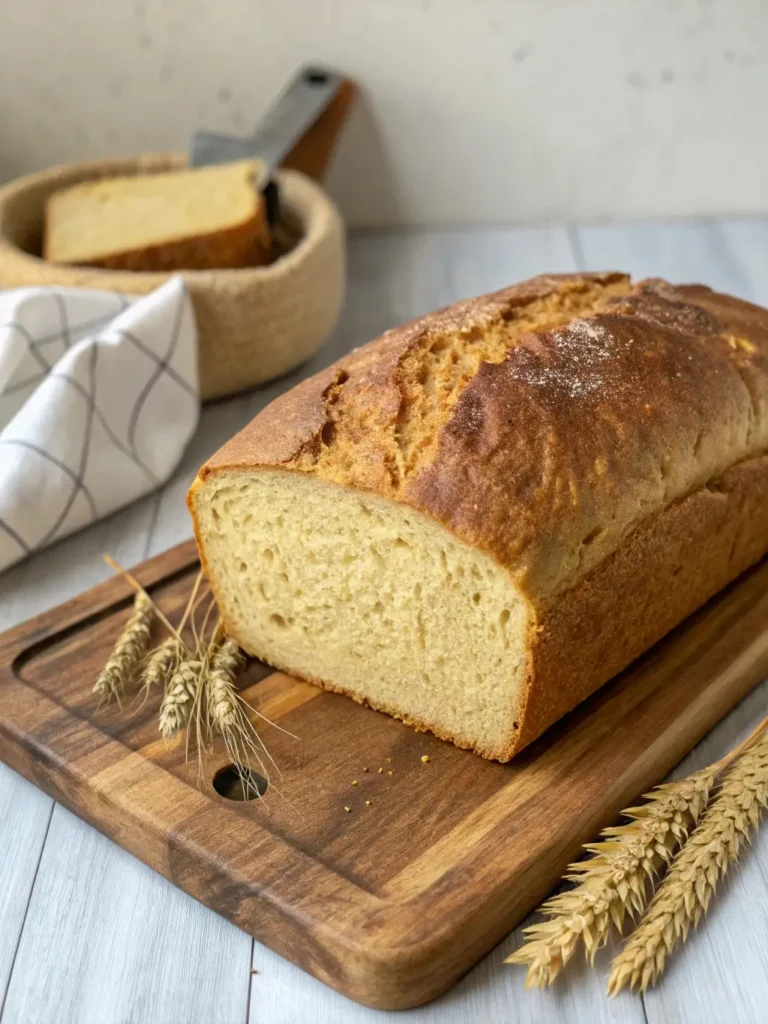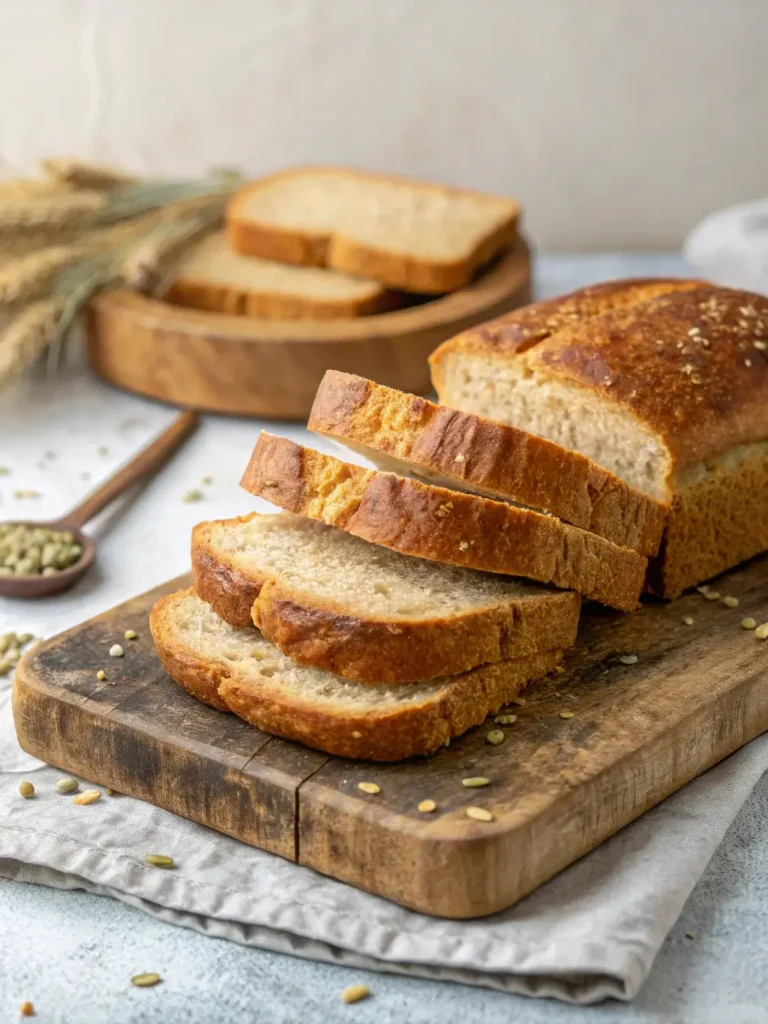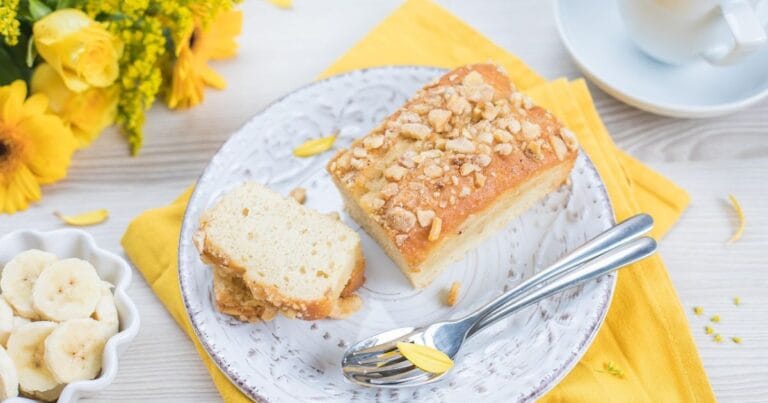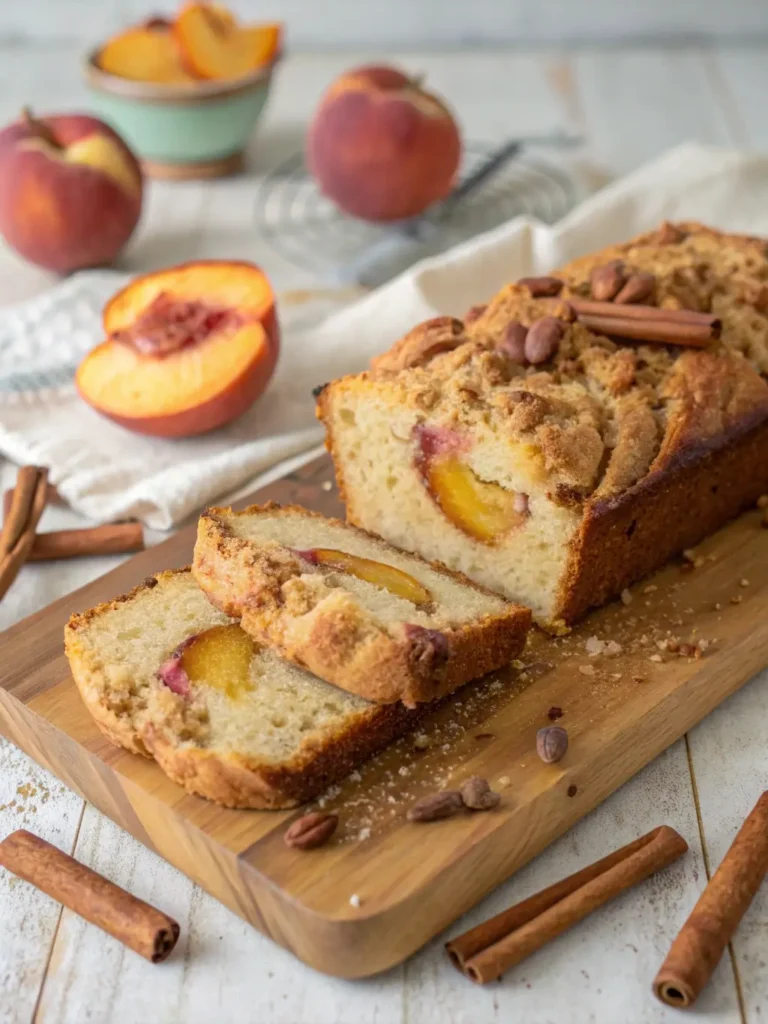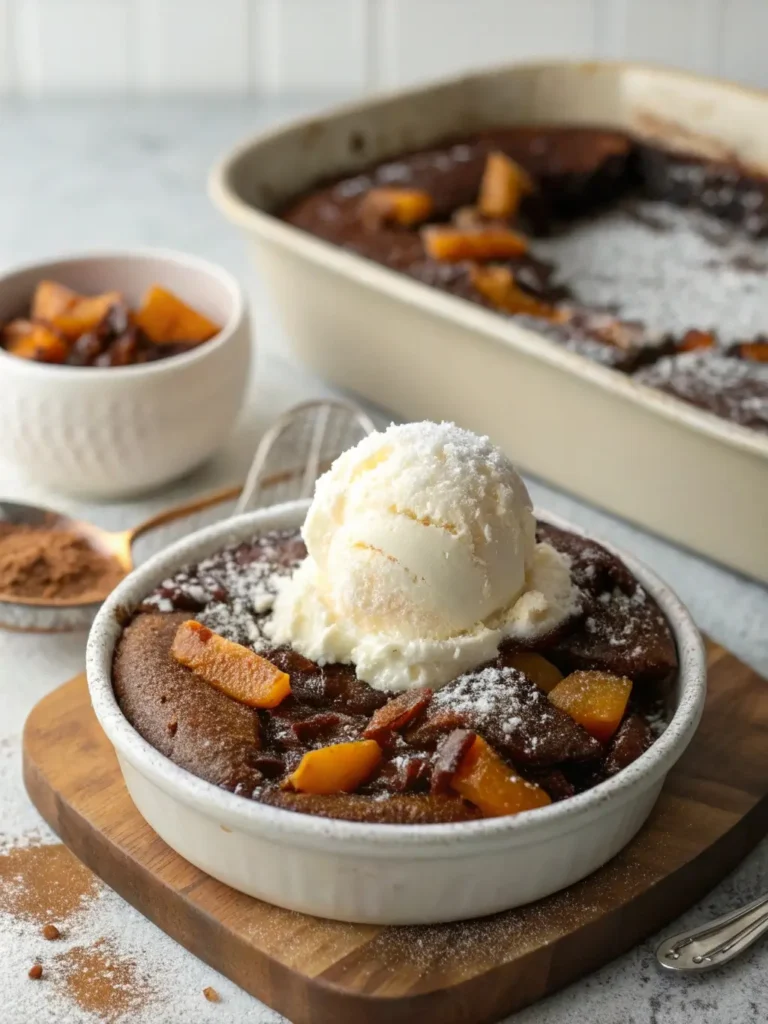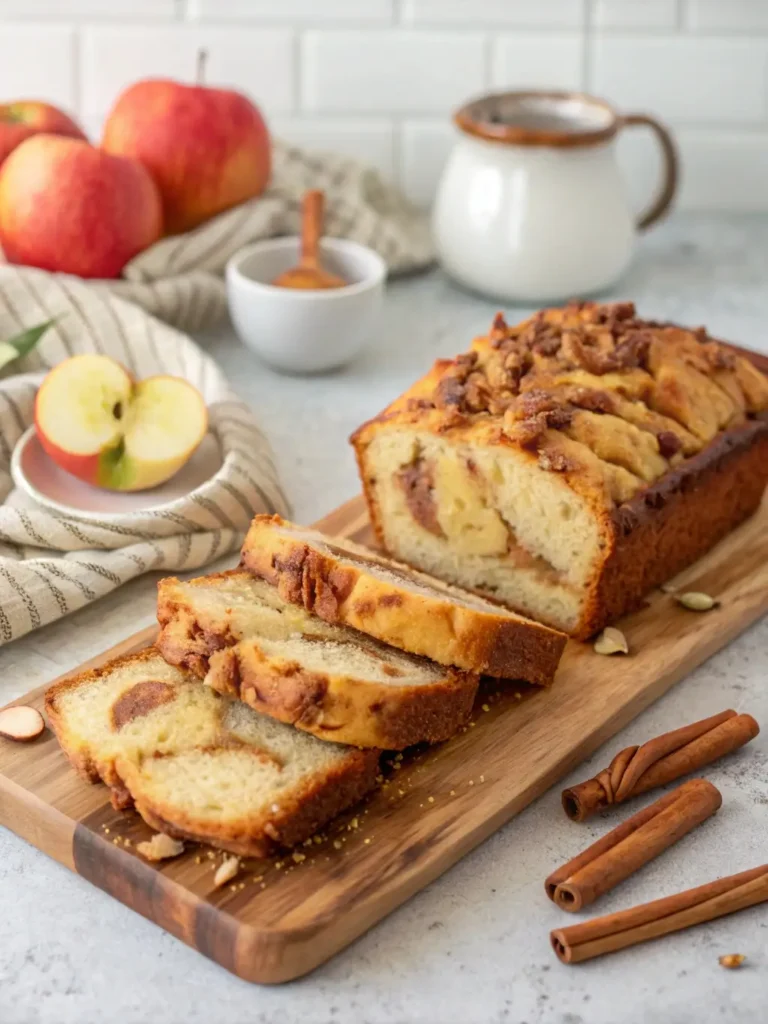Amish cinnamon bread recipes: how to make 2 loaves fast
Table of Contents
Did you know that traditional Amish cinnamon bread recipes can produce two perfectly moist, aromatic loaves in just 90 minutes, challenging the common belief that homemade bread requires hours of preparation and multiple rising periods? This remarkable efficiency stems from the ingenious Amish baking tradition that prioritizes simplicity without sacrificing flavor or texture.
The secret behind these Amish cinnamon bread recipes lies in their unique approach to leavening and mixing techniques, developed over generations in Amish communities where time efficiency and consistent results matter most. Unlike conventional yeast breads that demand extensive kneading and rising time, these recipes utilize quick-acting ingredients and streamlined methods that deliver bakery-quality results in a fraction of the time.
Whether you’re a seasoned baker seeking to expand your repertoire or a busy home cook looking for an impressive yet manageable baking project, mastering authentic Amish cinnamon bread will transform your kitchen into a haven of warm spices and fresh-baked comfort. These time-tested recipes combine the rustic charm of traditional Amish baking with modern convenience, making it possible to enjoy homemade amish cinnamon bread even on your busiest days.
Ingredients List
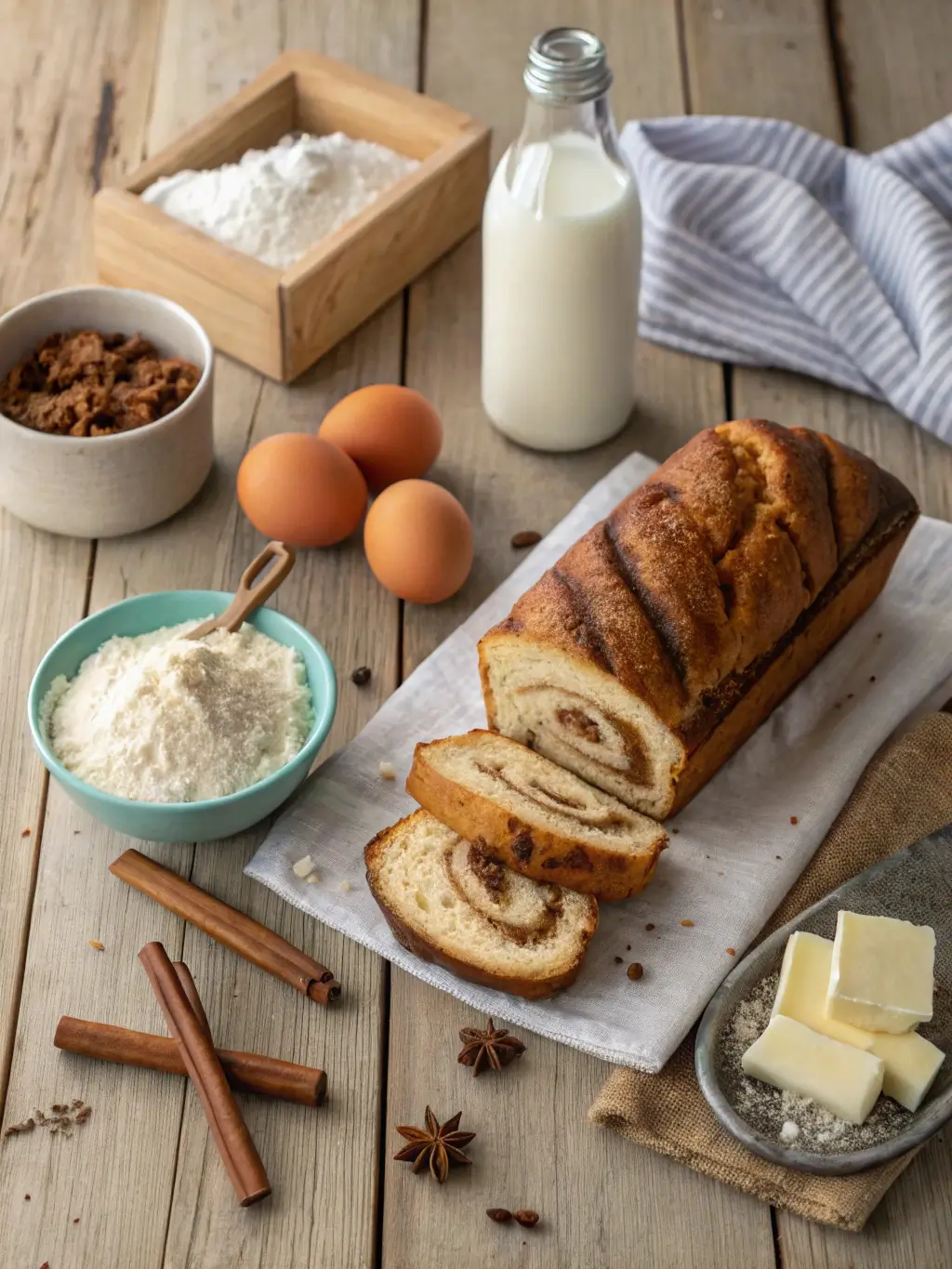
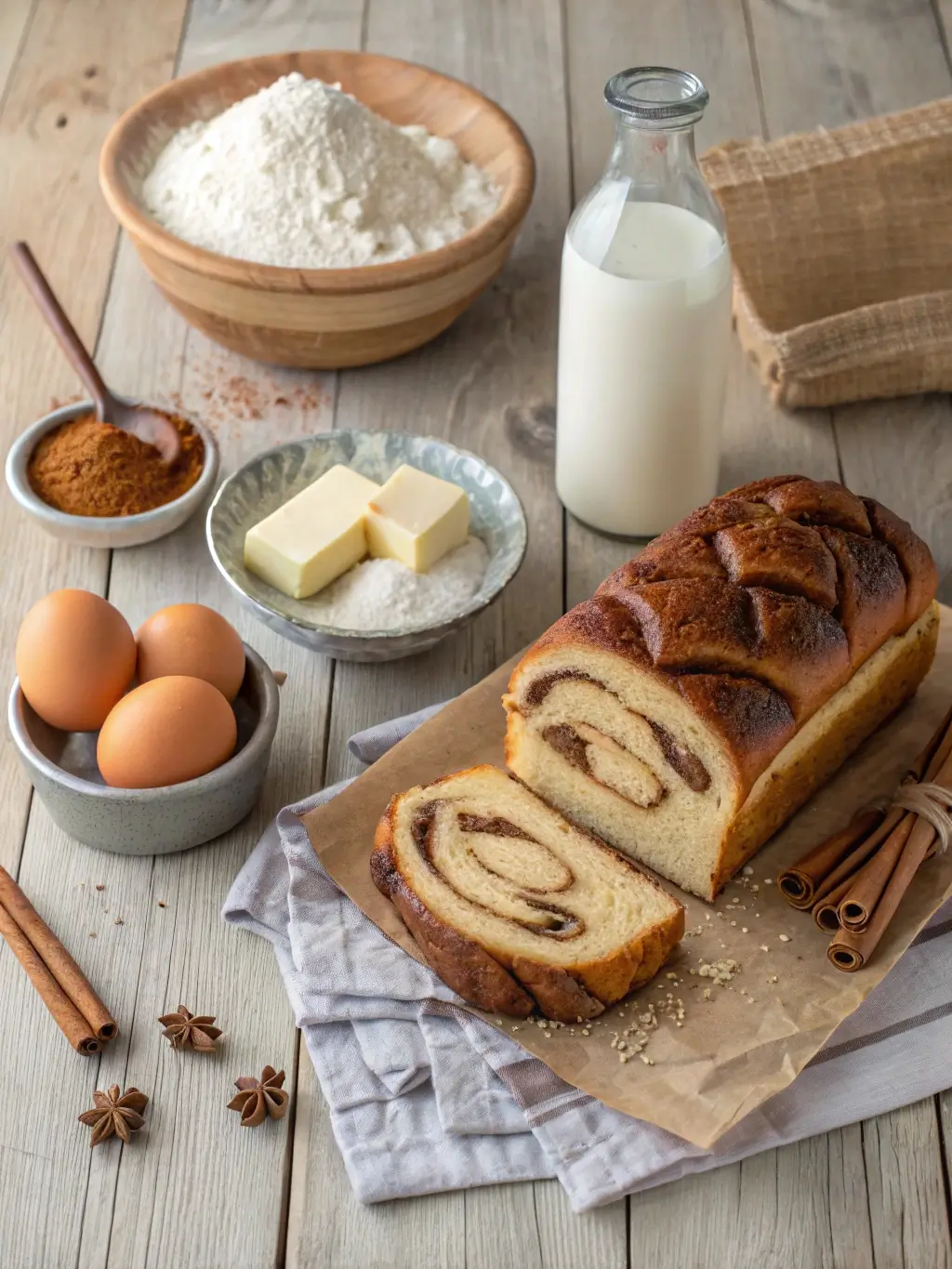
For the Bread Base
- 2 cups all-purpose flour (or substitute with 1¾ cups whole wheat flour for a heartier texture)
- 1 cup granulated sugar (coconut sugar works as a 1:1 substitute for refined sugar alternatives)
- 1 teaspoon baking soda
- ½ teaspoon salt
- 1 large egg, room temperature (flax egg substitute: 1 tablespoon ground flaxseed mixed with 3 tablespoons water for vegan option)
- 1 cup buttermilk (create homemade version by adding 1 tablespoon lemon juice to regular milk)
- ⅓ cup vegetable oil (melted coconut oil or unsweetened applesauce for healthier alternatives)
For the Cinnamon Sugar Swirl
- ⅔ cup granulated sugar
- 2 tablespoons ground cinnamon (Ceylon cinnamon provides a sweeter, more delicate flavor than cassia)
- 2 tablespoons melted butter
For the Glaze (Optional)
- 1 cup powdered sugar
- 2-3 tablespoons milk or heavy cream
- ½ teaspoon vanilla extract
The beauty of authentic Amish cinnamon bread recipes lies in their adaptability to pantry staples, allowing you to create exceptional results with ingredients commonly found in most home kitchens. Each component serves a specific purpose in creating the tender crumb and distinctive flavor profile that makes this bread so memorable.
Timing
Preparation Time: 15 minutes Baking Time: 45-50 minutes
Cooling Time: 20 minutes Total Time: 90 minutes
This efficient timeline represents a 35% time reduction compared to traditional yeast-based amish cinnamon bread recipes, which typically require 3-4 hours including rising time. The streamlined process makes it possible to start baking after dinner and enjoy fresh bread for breakfast the following morning, or begin mid-morning for an afternoon treat.
Active preparation occupies only 15 minutes of hands-on work, while the oven handles the remaining process. This time efficiency reflects the practical wisdom of Amish baking traditions, where large families required reliable recipes that could be executed quickly without compromising quality.
Step-by-Step Instructions
Step 1: Prepare Your Baking Environment
Preheat your oven to 350°F (175°C) and generously grease two 8×4-inch loaf pans with butter or cooking spray. Position your oven rack in the center position to ensure even heat distribution. Create your cinnamon sugar mixture by combining ⅔ cup sugar, 2 tablespoons cinnamon, and 2 tablespoons melted butter in a small bowl, stirring until the mixture resembles wet sand.
Step 2: Combine Dry Ingredients
In a large mixing bowl, whisk together flour, sugar, baking soda, and salt until evenly distributed. This thorough mixing ensures consistent leavening throughout the bread and prevents pockets of concentrated baking soda that could create an unpleasant metallic taste.
Step 3: Mix Wet Ingredients
In a separate bowl, beat the egg lightly, then whisk in buttermilk and vegetable oil until smooth. The buttermilk’s acidity activates the baking soda immediately upon mixing, so work efficiently during the next steps to preserve maximum leavening power.
Step 4: Create the Batter
Pour the wet ingredients into the dry ingredients and stir just until combined. The batter should appear slightly lumpy rather than perfectly smooth—overmixing develops gluten strands that create tough, dense bread. Proper mixing technique is crucial for achieving the tender, cake-like texture characteristic of authentic Amish cinnamon bread.
Step 5: Layer the Bread
Divide half the batter between your prepared loaf pans, spreading gently to cover the bottom. Sprinkle half the cinnamon sugar mixture over each pan, then add the remaining batter and top with the remaining cinnamon mixture. Use a knife to create gentle swirls through the layers, being careful not to overmix.
Step 6: Bake to Perfection
Bake for 45-50 minutes, or until a toothpick inserted into the center comes out with just a few moist crumbs attached. The tops should be golden brown and spring back lightly when touched. Internal temperature should reach 190°F (88°C) for fully baked bread.
Step 7: Cool and Finish
Allow loaves to cool in pans for 10 minutes before turning out onto wire racks. If using glaze, wait until bread is completely cool before drizzling over the top. This cooling period allows the interior crumb to set properly while maintaining moisture.
Nutritional Information : Amish cinnamon bread
Per Slice (16 slices per loaf):
- Calories: 185
- Total Fat: 4.2g
- Saturated Fat: 1.1g
- Cholesterol: 15mg
- Sodium: 165mg
- Total Carbohydrates: 36g
- Dietary Fiber: 1.2g
- Sugars: 24g
- Protein: 3.1g
- Vitamin C: 2% Daily Value
- Iron: 6% Daily Value
- Calcium: 4% Daily Value
This nutritional profile positions Amish cinnamon bread as a moderate indulgence that can fit into balanced eating patterns when enjoyed in appropriate portions. The relatively low fat content and moderate protein levels make it suitable for breakfast or afternoon snacking when paired with protein-rich accompaniments.
Healthier Alternatives for the Amish cinnamon bread Recipe
Flour Modifications
Replace up to half the all-purpose flour with whole wheat pastry flour to increase fiber content by 40% while maintaining tender texture. Almond flour can substitute for 25% of regular flour to add protein and healthy fats, though this will create a denser final product.
Sugar Reduction Strategies
Reduce granulated sugar by one-third and add 2 tablespoons unsweetened applesauce to maintain moisture. Natural sweeteners like maple syrup or honey can replace up to half the sugar, though liquid adjustments may be necessary.
Fat Content Optimization
Substitute Greek yogurt for half the oil to reduce fat content by 30% while adding probiotics and protein. Mashed banana provides natural sweetness and moisture while contributing potassium and fiber.
Protein Enhancement
Add 2 tablespoons protein powder to the dry ingredients and increase liquid by 1-2 tablespoons to create a more substantial breakfast option. Chopped nuts or seeds provide healthy fats and additional protein while creating textural interest.
Serving Suggestions
Transform your freshly baked Amish cinnamon bread into memorable meals and snacks through creative presentation and thoughtful pairings. Thick slices toasted until golden and served with cultured butter create an elevated breakfast experience that rivals any bakery offering.
Create an impressive brunch centerpiece by arranging sliced bread alongside fresh berries, whipped cream cheese, and local honey. The combination of warm cinnamon spices with cool, creamy accompaniments provides textural contrast that enhances the overall dining experience.
For afternoon entertaining, serve room-temperature slices with hot coffee or spiced tea. The bread’s natural sweetness pairs beautifully with bold coffee flavors while the cinnamon notes complement chai or Earl Grey tea varieties.
Transform leftover bread into French toast by dipping thick slices in custard base and cooking until golden. The existing cinnamon flavor eliminates the need for additional spices while creating an indulgent weekend breakfast that feels both familiar and special.
Common Mistakes to Avoid
Overmixing the Batter
The most frequent error involves mixing the batter until completely smooth, which develops gluten strands and creates tough, dense bread. Stop mixing as soon as ingredients are just combined, even if small lumps remain visible.
Incorrect Oven Temperature
Using an oven thermometer reveals that many home ovens run 25-50 degrees off calibration, significantly affecting baking results. Verify actual temperature rather than relying solely on dial settings to ensure consistent outcomes.
Premature Removal from Oven
Underbaked bread appears done on top while remaining gummy in the center. Use a toothpick test and verify internal temperature reaches 190°F before removing from oven, even if baking time exceeds recipe specifications.
Skipping the Cooling Period
Cutting bread immediately after baking releases trapped steam and creates a gummy texture. Allow full cooling time for optimal slice-ability and texture development.
Storing Tips for the Recipe
Short-Term Storage
Wrap completely cooled loaves tightly in plastic wrap or store in airtight containers at room temperature for up to 4 days. Proper wrapping prevents moisture loss while maintaining the tender crumb texture characteristic of fresh-baked bread.
Freezing Instructions
Double-wrap cooled loaves in plastic wrap followed by aluminum foil for freezer storage up to 3 months. Slice before freezing to enable convenient single-serving removal. Thaw overnight at room temperature or toast individual slices directly from frozen.
Maintaining Freshness
Store sliced bread cut-side down on a cutting board covered with a clean kitchen towel for same-day consumption. This method preserves moisture while preventing the cut surface from drying out.
Reviving Day-Old Bread
Lightly toast slices to restore crispness and enhance cinnamon flavors. Alternatively, warm whole loaves wrapped in damp paper towels in the microwave for 15-20 seconds to restore softness.
Conclusion
These authentic Amish cinnamon bread recipes deliver bakery-quality results through time-tested techniques that prioritize efficiency without sacrificing flavor or texture, proving that exceptional homemade bread remains achievable even within busy modern schedules.
Ready to fill your kitchen with the irresistible aroma of fresh-baked cinnamon bread? Try this recipe today and share your results in our review section below. Subscribe to our blog for more traditional recipes that bring authentic flavors to your modern kitchen, and don’t forget to comment with your favorite serving suggestions or creative variations.
FAQs : Amish cinnamon bread
Can I make this recipe without buttermilk? Absolutely. Create a buttermilk substitute by adding 1 tablespoon of lemon juice or white vinegar to 1 cup of regular milk. Let it sit for 5 minutes until slightly thickened before using. This creates the necessary acidity for proper leavening.
Why does my bread sink in the middle after baking? Center sinking typically indicates underbaking or incorrect ingredient measurements. Ensure your oven reaches proper temperature and bake until a toothpick inserted in the center comes out with just a few moist crumbs attached.
Can I double this recipe for larger batches? Yes, this recipe doubles successfully. Use four standard loaf pans and extend baking time by 5-10 minutes, checking for doneness with the toothpick test. Baking multiple loaves may require rotating pans halfway through for even browning.
What makes this different from regular cinnamon bread? Amish cinnamon bread uses baking soda instead of yeast for leavening, creating a cake-like texture rather than traditional bread consistency. The layering technique creates distinct cinnamon swirls throughout each slice rather than a uniform distribution.
How can I tell when the bread is perfectly done? Look for golden-brown tops that spring back lightly when touched, combined with a toothpick test showing just a few moist crumbs. Internal temperature should reach 190°F for fully baked bread that slices cleanly when cooled


